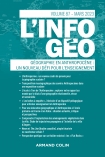
Annales de Géographie n° 662 (4/2008)
Pour acheter ce numéro, contactez-nous
Recevez les numéros de l'année en cours et accédez à l'intégralité des articles en ligne.
L’objet de cet article est de cerner les logiques par lesquelles les thématiques, les notions et les concepts mobilisés depuis 1900 par les géographes pour aborder les questions relatives à l’habitat et au logement dans les villes françaises ont évolué. La transformation est loin d’être linéaire, et calque en grande partie l’histoire de la discipline. Elle suit également les aléas d’un contexte social et politique pour le moins mouvant. Durant la première moitié du siècle, trois façons d’étudier les approches sur l’habitat urbain sont présentées : inscription dans les cadres tracés par une géographie ruraliste et régionaliste, une approche urbaine héritée de l’habitat rural, une démarche d’inspiration leplaysienne et une démarche hygiéniste. La Seconde Guerre mondiale marque un tournant dans la discipline, l’urbanisation rapide et massive accompagne un effacement de la géographie de l’habitat. L’article présente les causes de ce retrait : une standardisation de l’habitat urbain, des études formatées par les grandes enquêtes nationales, et une intégration de l’habitat dans la géographie urbaine. Durant cette moitié de siècle, un rapprochement de la discipline avec la sociologie a ouvert la géographie vers la prise en compte de « l’individu-habitant », ce qui permet à l’aube des années deux milles un timide retour vers des recherches opérées à l’échelon de « la maison ».
This article focuses on the logics by which themes, notions and concepts have been mobilized since 1900 by geographers in order to describe the evolution of the housing questions in French cities. There is no linear process involved, it rather follows largely the history of the discipline itself. It matches the moving social and political context as well. During the first half of the century, three approaches were in use: walking in the footsteps of a rural and regionalist geography; borrowing from an urban approach inherited from the rural housing, taking a leplaysian and hygienist method. The Second World War introduces a new situation in geography: the fast and massive urbanization lead to the disappearance of the geography of housing. This article presents looks at the reason of this retreat: a standardization of the urban housing, the studies formatted by big national inquiries, and an integration of the housing in the urban geography. During the second half of the century, the link of the geography with the sociology opened the geography towards the consideration of “the individualinhabitant”.

